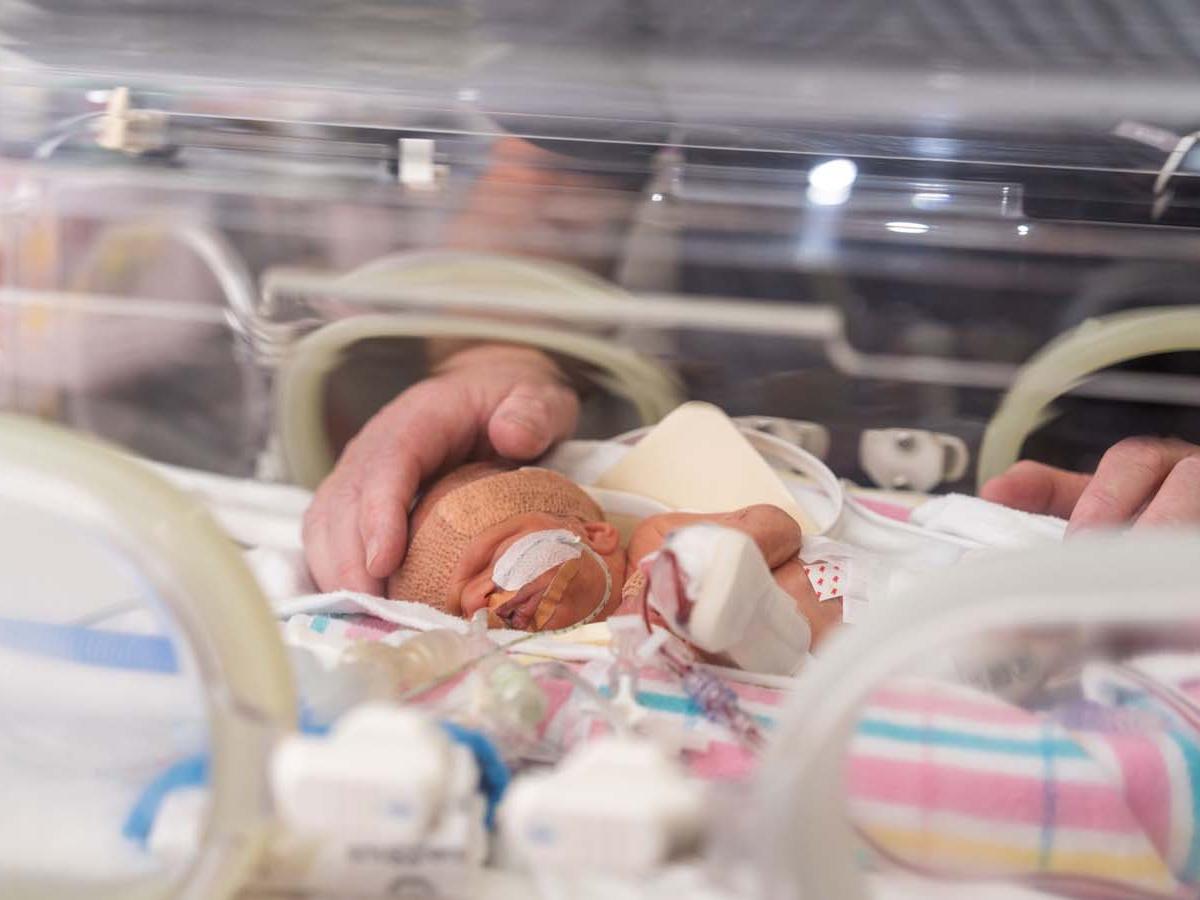From blunt to precise: New research to help premature babies thrive

Little Ollie* was born at 32 weeks, eight weeks before his due date. His mother Amelia* was taken to hospital after an ultrasound revealed that Ollie hadn’t grown in four weeks and was showing signs of fetal distress.
After being admitted, it was a priority for Amelia to be given the first of two doses of corticosteroid injections, to help her baby’s lungs develop. Ollie and Amelia were monitored closely and 48 hours after the first injection, Ollie was born, weighing just 1.3 kilograms.
Babies who are born preterm, before 37 weeks gestation, have immature lungs. If untreated in babies born before 34 weeks, this can have serious health consequences, such as lung disease or even death, particularly in babies born very early.
Corticosteroid injections have been used in clinical practice for over 50 years, as a treatment to help mature the lungs of babies at risk of preterm birth. The injections are given to the mother, over a period of at least 48 hours before birth and it is the single most effective treatment to improve survival rates of preterm babies.
“Corticosteroid injections are highly effective in increasing survival rates of preterm babies, but they are also a blunt instrument because they act everywhere in the baby.”Associate Professor Kathryn Gatford
”Corticosteroid injections are highly effective in increasing survival rates of preterm babies, but they are also a blunt instrument because they act everywhere in the baby,” says Associate Professor Kathryn Gatford, who leads a new research project, aspiring to turn the ‘bluntness’ into ‘precision’.
While having a desirable effect on helping babies breathe when they otherwise couldn’t, there is evidence that corticosteroids also affect the development of the brain. Children who were exposed to corticosteroids before birth, many of whom are not actually born early, are twice as likely to be diagnosed with developmental or behavioural disorders in childhood.
“Corticosteroid injections have saved the lives of many babies. While they are not perfect, I wouldn’t want any mother at risk of having a premature baby to question if she should have them or not.”Professor Michael Stark
“Corticosteroid injections have saved the lives of many babies. While they are not perfect, I wouldn’t want any mother at risk of having a premature baby to question if she should have them or not,” says Professor Michael Stark, Head of Neonatal Services at the Women’s and Children’s Health Network and Deputy Director Clinical Research at the Robinson Research Institute, who is also a Chief Investigator for this new research project.
However, the team of interdisciplinary researchers is working on better alternatives. They are investigating if the asthma drug ciclesonide can be used as a potential alternative treatment. It is hoped it would act selectively in the lungs, retaining the benefits of preterm lung maturation, without affecting the development of other organs in babies, particularly the brain.
Preliminary studies have shown positive effects of the drug on lung maturation, so this new pre-clinical study, funded by a National Health and Medical Research Council (NHMRC) Ideas Grant with more than two million dollars, aims to confirm the long-term safety of the drug in this application as well as the required dose that would need to be given.
The research team hopes that their work will pave the way for future clinical trials and ultimately a new high precision treatment without the side effects.
If successful, this has the potential to positively impact a large proportion of children and their families, globally. In Australia, approximately 10 per cent of babies are born before 37 weeks gestation each year but rates vary between countries with some countries having rates of up to 15 per cent of babies born early.
Project details
‘Maturing babies’ preterm lungs without damaging their brains.’ Funded by National Health and Medical Research Council Ideas Grant, $2,308,300 over four years.
Chief Investigators
- Associate Professor Kathryn Gatford, Robinson Research Institute, The University of Adelaide
- Professor Janna Morrison, University of South Australia
- Professor Michael Stark, Robinson Research Institute, The University of Adelaide, and Women’s and Children’s Health Network
- Associate Professor Michael Wiese, University of South Australia
- Dr Sebastian McBride, University of Aberystwyth
- Dr Mitchell Lock, University of South Australia
- Associate Professor Joanne Davidson, University of Auckland
In collaboration with SAHMRI Preclinical, Imaging and Research Laboratories (PIRL).
Stay in touch
*Names changed.

